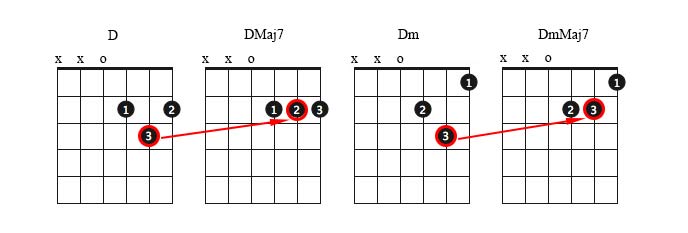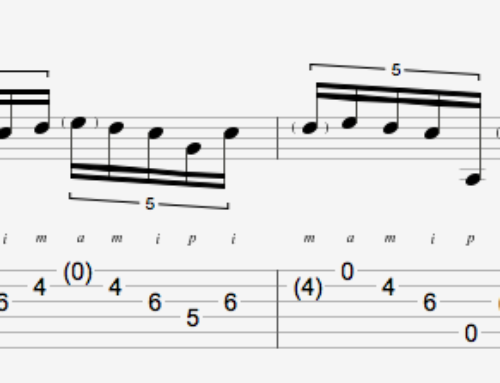Understanding 7th Chords (Basic)
A subject that sometimes causes confusion for beginner guitarists is the whole area of 7th chords.
These chords crop up all the time in many songs and are an essential part of any guitarist’s chord repertoire.
The intention here is to provide an intuitive and simple guide to understanding and learning 7th chords with no knowledge of music theory whatsoever.
Therefore I am purposefully going to avoid talking about ‘leading tones’, ‘scale degrees’ and ‘intervals’ in this article.
I will address this subject in those terms in a later article.
To begin, all we need to know is where octaves are located on the guitar.
The various locations are shown in the diagram below.
The important thing once you learn these octave shapes is to identify where they occur in your common open and barre chord shapes.
Once you have your octave shapes memorised, all you need to do is follow some really simple steps.
The octave note will be replaced by a note either 1 or 2 frets behind it (1 or 2 semi-tones below the octave)
It’s as simple as this:
‘Maj7’ Chords
If you go back 1 fret from the octave, you just write ‘Maj7’ to the end of the chord you were playing.
N.B (The original chord name does not change. If it was Dm it will still be Dm. The Maj7 suffix just attaches to the end)
For example D becomes Dmaj7 and Dm becomes DmMaj7(Pronounced D minor, Major 7)
Octave moves back 1 fret to give ‘Maj7’ Chord
‘7’ Chords
If you go back 2 frets from the octave, you just write ‘7’ to the end of the chord you were playing.
For example E becomes E7 and Em becomes Em7
Octave moves back 2 frets to give ‘7’ Chord
Once again:
Octave back 1 fret : Maj7
Octave back 2 frets: 7
It’s as simple as that!
A few notes:
- Major chords with ‘7’ at the end are called Dominant 7th chords ie E7
- Don’t be confused by the terminology, Maj7 does not imply that the chord is Major. The chord can be either Major or Minor and still have a Maj7 at the end.
- There is another type of 7th chord called a Diminished 7th. This one moves 3 back from the octave but only makes sense when the chord is already diminished. I will do an article on Diminished 7th chords soon
- A ‘Half-Diminished 7th’ chord is just a m7 chord like Bm7 for example, with a♭5: Bm7b5
- The 7th‘s as they occur in a normal major key are shown in the table below. This is just how they naturally occur, there is nothing stopping you doing whatever you want with the chords you have learned!
| I | ii | iii | IV | V | vi | viio |
| Maj7 | 7 | 7 | Maj7 | 7 | 7 | 7 |
| CMaj7 | Dm7 | Em7 | FMaj7 | G7 | Am7 | Bm7b5 |
Now try finding your own voicings of 7th chords using the simple guidelines explained in this article.
Try it for A Shape, C shape and G shape chords. Double up on the 7th note in the chords, experiment!
You are now ready to play Jazz. Just kidding! :D






